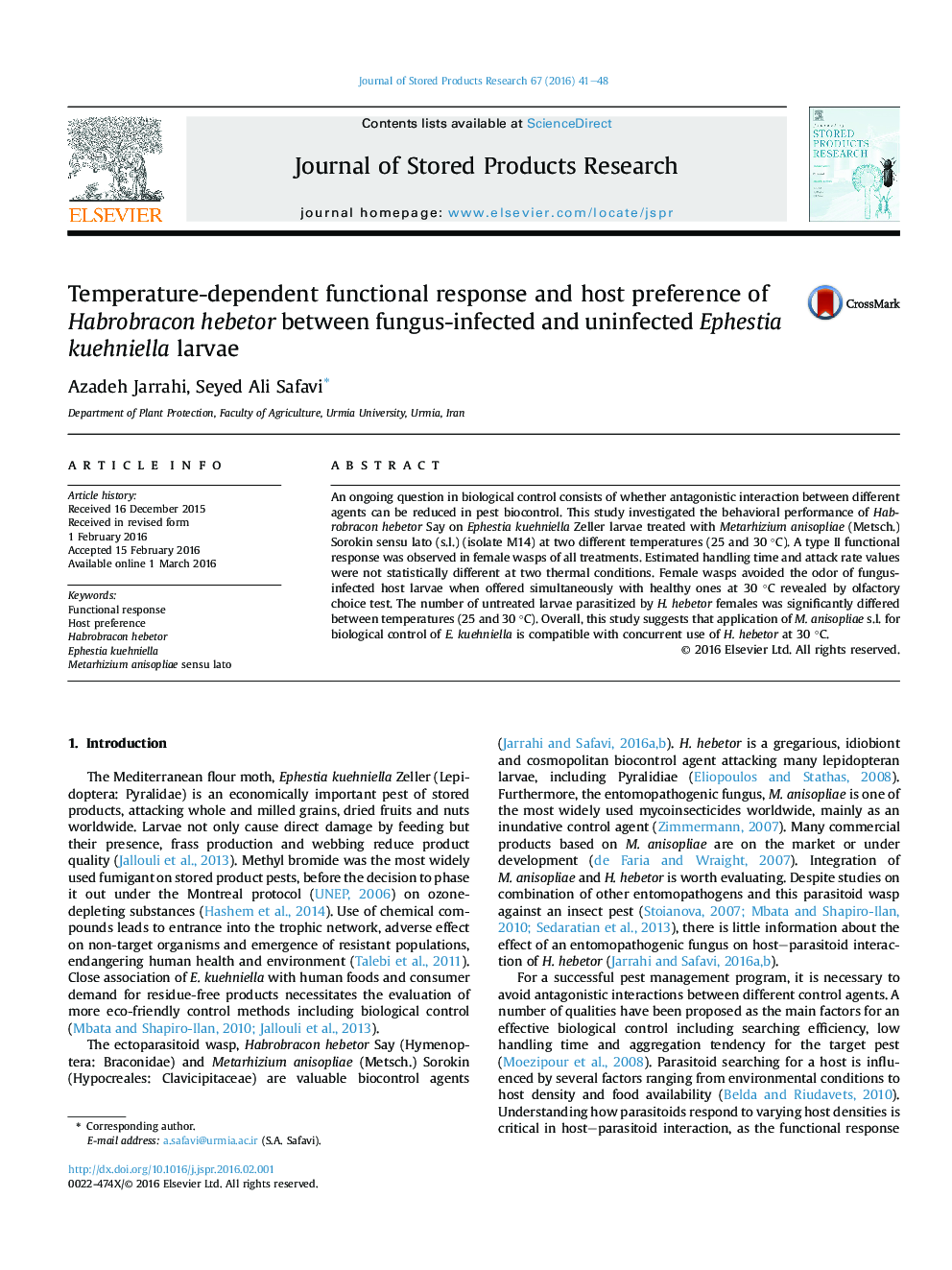| Article ID | Journal | Published Year | Pages | File Type |
|---|---|---|---|---|
| 4516962 | Journal of Stored Products Research | 2016 | 8 Pages |
•Functional response of Metarhizium anisopliae-infected Ephestia kuehniella was affected.•Parasitoids avoided fungus-infected hosts at olfactory and preference choice tests.•Antagonistic interaction of M. anisopliae with Habrobracon hebetor was lower at 30 °C.
An ongoing question in biological control consists of whether antagonistic interaction between different agents can be reduced in pest biocontrol. This study investigated the behavioral performance of Habrobracon hebetor Say on Ephestia kuehniella Zeller larvae treated with Metarhizium anisopliae (Metsch.) Sorokin sensu lato (s.l.) (isolate M14) at two different temperatures (25 and 30 °C). A type II functional response was observed in female wasps of all treatments. Estimated handling time and attack rate values were not statistically different at two thermal conditions. Female wasps avoided the odor of fungus-infected host larvae when offered simultaneously with healthy ones at 30 °C revealed by olfactory choice test. The number of untreated larvae parasitized by H. hebetor females was significantly differed between temperatures (25 and 30 °C). Overall, this study suggests that application of M. anisopliae s.l. for biological control of E. kuehniella is compatible with concurrent use of H. hebetor at 30 °C.
Graphical abstractFunctional response of Habrobracon hebetor to Metarhizium anisopliae-infected larvae of Ephestia kuehniella.Figure optionsDownload full-size imageDownload as PowerPoint slide
